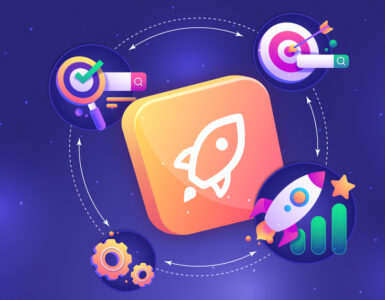There’s no doubt you need a website for your app if you plan to stay in this business for long. A promo website for your app is your app’s home outside of the app store; a place where potential users can find all they need to know about your apps purpose, functionality and value.
If you decided to create a website for your app, here’s what you need to know:
1. Create a Visual Introduction with an App Video
Video is an extremely powerful media channel. The reality is that people generally don’t read as much as they used to, and when they do, they tend to skim-read. So presenting an introductory promo video on your homepage is an effective way to engage with potential users of your app. So while making a promo video focus on creating powerful visuals without technical jargon. Show the key functionality and best features of your app, concentrating on the key areas that you know are of primary interest to your target audience. The best thing about a promo video is that you can use it on multiple media platforms: You can upload it to YouTube, and promote it using YouTube ads, share it on Facebook, and promote it through Facebook ads, send it to your email list, send it to bloggers, and feature it on your Google Play description page!
2. Complete your landing page with a written intro
The words you use to describe your app must resonate with your target demographic. Use sentences and adjectives that outline the benefits for the user. Your content will also be the driving factor in how your app website ranks organically for your target keywords in the major search engines like Google. By keyword targeting your content around specific phrases that users regularly use to search for an app like yours, you can increase your organic traffic. Map out a keyword strategy for each page of your site. Pick no more than three main target keywords for each page and seamlessly integrate the words into your titles, sub-titles and content.
3. Feature Media Quotes
That would be great if you placed some quotes and reviews about your app on your website so that new potential users have more trust in your app. Featuring strategically placed media quotes in and around key aspects of your site’s content provides potential users with a positive signal that your app has been critically well received. So, the best way is to pick a few powerful quotes and sprinkle them strategically in highly visible areas of the homepage, and on any other key, relevant pages.
4.Use Paid Advertising
You need consistent high-volume traffic to measure and test your landing page and generate enough app installs for your app to take traction and start competing with your competitors. In short, there’s no time to waste. And the only way to guarantee traffic is to use paid advertising. But don’t go throwing money at Google Adwords or Facebook Advertising without knowing what you’re doing. If you are going to run the campaigns yourself, set aside a small test budget to experiment. With paid traffic, you have the option to send users to the App Store description page or your website landing page. While the obvious destination might seem like the closest to the download button (the App Store), often sending users to a landing page on your website that pre-sells your app with a promotional video and social proof is far more effective. Also, using a traffic tracking program like Google Analytics will help you better understand your user demographic, which in turn will help you tweak your app’s website for a higher conversion rate.
The more you learn and analyze the data the faster you will start profiting from your hard work. You can always turn to us for additional help to get to the highest rank positions by keywords in Google App Store on our website.
Source: https://www.facebook.com/1861279914084992/posts/1976423789237270





















